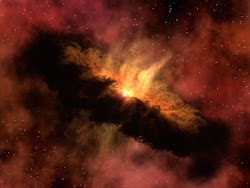Clyde L. Webster, Jr.
Geoscience Research Institute
The fact that radioactive isotopes are present in the materials from Earth, the Moon, and meteorites strongly suggests that our Solar System has a finite age. Can this age be calculated? Potential minimum and maximum ages for the formation of our Solar System may be obtained through an analysis of radioactive isotope ratios, parent:daughter ratios, and missing radioactive isotopes. For example, uranium-238 has a half-life of 4.47 billion years. Observing the limitations mentioned in the article, Radioisotope Age: Part II, which does not permit age calculations beyond 7-10 half-lives, we may conclude that the presence of uranium-238 in the Solar System implies a maximum age of about 4.5 billion years for its postulated consolidation. This figure is further refined by analyzing the uranium-235:uranium-238 ratio, which implies a maximum age of about 5 billion years.
Using the same method of analyzing parent:daughter ratios, paying attention to cases where daughter isotopes are found and parent isotopes are clearly absent, a minimum age can be obtained for the consolidation of the Solar System as proposed by the scientific community. For example, samarium-146, with a half-life of about 100 million years, is not found in naturally occurring deposits. However, its stable daughter product, neodymium-142, is found there. A 10 half-life calculation would therefore set a minimum age for consolidation of about one billion years. Thus, this process brings us to the interesting conclusion that the radiometric age of the planets, moons, and meteorites of our Solar System may range between one and five billion years.
What are the implications of such an ancient Solar System? How does this impact our view of the Creator? First, it is clear from Scripture that God is Creator of all things and, since He is God, i.e., eternal, the timing for the creation of matter does not really affect our understanding of His nature. It does have an impact on our understanding of the first two verses of Genesis which state:
In the beginning God created the heavens and the earth. Now the earth was formless and empty, darkness was over the surface of the deep, and the Spirit of God was hovering over the waters (NIV).
Some people believe that "In the beginning" refers to the first day of creation week and they conclude that the entire universe was created very recently. Others believe that the first day of creation week is not actually referred to until Genesis 1, verses 3-5:
And God said, "Let there be light," and there was light. God saw that the light was good, and he separated the light from the darkness. God called the light "day," and the darkness he called "night." And there was evening and there was morning — the first day (NIV).
Either position can be supported from Scripture. What we know and understand at present about isotopes in our Solar System suggest that the inorganic material is old. New information and new interpretations may alter this conclusion in the future. An awareness of these options helps Christians working in the sciences to develop concepts and models about our origins.
© 1996 All contents copyright Geoscience Research Institute. All rights reserved.










0 comments:
Post a Comment